Learn
about auto components
building better
futures.
Scroll down
and thenclick to learn more
A vehicle’s body or shell is designed for safety as well as looks. Flaw-free steel, precise panel formation and assembly, and built-in crumple zones are just a few of the safety essentials.
Did you know?
Every vehicle has a unique VIN number that must be stamped to an exact height and depth on the body shell or chassis. Once the stamp is done, it’s illegal to change it in any way. That means mistakes cannot be fixed if the body shop gets it wrong!
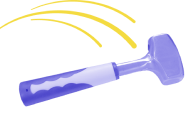
Fun Fact!
The press that stamps out the roof of a car is about three storeys high and capable of exerting tons of force!
A tyre is a thick, ring-shaped rubber casing that fits onto the wheel rim. They are usually inflated or contain an inflated inner tube. This flexible cushioning is responsible for carrying the weight of the vehicle and improving grip, safety and ride comfort as well as providing cushioning against road shock and allowing the vehicle to turn.
Did you know?
All tyres have their date of manufacture marked on their sidewall. This is called the DOT code after the Department of Transportation, and is used to track tyre production for recall purposes.
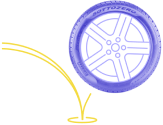
Fun Fact!
Tyres are currently recycled into more than 110 products! This is a great initiative and is decreasing the quantity of scrap rubber ending up in landfills. Common uses for recycled tyres around the world are roading, artificial turf and playground mats. To create these products the tyres go through a recycling process including removal of any steel frames then shredding the strap tyres into small bits of rubber called crumbs.
Related Careers

Rear Suspension
Suspension components don’t just create a smooth and comfortable ride. They’re also designed to keep a vehicle’s tyres in contact with the road. This provides the stability and traction needed for the driver to control, steer and stop the vehicle effectively.
Did you know?
Worn suspension components and/or unexpected suspension reactions are common causes of road accidents.
Fun Fact!
A run flat tyre can go for 80km at 80kph!

Related Careers
- Tool Maker/Diemaker
- Millwright
- Production Manager
- Quality Viewer
- Electrician
- Assembly Line Worker

Power Train
Did you know?
Wear and tear on power train components can cause abnormal noise, loss of drive or gear ratio, excessive vibration and other problems. Warning lights are there to notify drivers if these problems are detected.

Fun Fact!
The world record for removing and replacing a car engine is 42 seconds, set by mechanics working on a Ford Escort on 21 November 1985!
Related Careers
- Assembly Line Worker
- Machine Operator
- Millwright
- Production Manager
- Quality Viewer
- Electrician

Interior trim may be designed for aesthetics and comfort, but these components also house some important functional and safety elements like instrument panels and airbags. Attractive styling needs to be supported by precision fitment and attention to detail to get everything working smoothly and looking good.
Did you know?
Interior trim is added to doors separately. These are connected to the body, fully trimmed, at a later stage in the production chain.
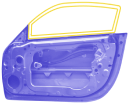
Related Careers
- Tool Maker/Diemaker
- Millwright
- Production Manager
- Quality Viewer
- Machine Operator
- Assembly Line Worker

Exterior Trim
Exterior trim is about looks as well as safety. Bumpers, door handles and mirrors need to be carefully colour-matched, while badges and mouldings must be straight and stuck down correctly. All vehicle glass is shatterproof and must be installed properly to maintain the integrity of the vehicle frame.
Did you know?
Windscreen glass is locally manufactured by NAACAM member, Shatterproof. Shatterproof glass was invented by accident when Edouard Benedictus dropped a glass flask coated in cellulose and it did not shatter.

Fun Fact!
Windscreen wipers were invented by a woman, named Mary Anderson!
Related Careers
- Tool Maker/Diemaker
- Millwright
- Production Manager
- Quality Viewer
- Machine Operator
- Assembly Line Worker

Electrical
The fitment of electrical and electronic components is a precision task. Any faults with the wiring harness or damage during fitment could mean the components don’t receive the power they need to function.
Did you know?
All electrical and electronic components run off battery power. If there are problems with the battery or the alternator charging the battery, none of these components will be able to work.
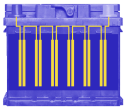
Fun Fact!
The electrical wiring system of an average vehicle contains roughly 18kg of copper!
Related Careers
- Tool Maker/Diemaker
- Millwright
- Production Manager
- Quality Viewer
- Machine Operator
- Assembly Line Worker

HVAC
The heating, ventilation and air conditioning (HVAC) system in a vehicle is used to control the internal temperature of the vehicle cabin. It also dehumidifies the interior and helps to clear fogged windshields. HVAC systems are run by a compressor attached to the car’s engine.
Did you know?
The refrigerant inside HVAC systems is harmful to the environment and must be carefully contained and sealed to avoid leaks.

Fun Fact!
The first car air conditioner was introduced in 1939 by American carmaker, Packard. To turn it off, the driver had to stop the engine, open the bonnet and disconnect the compressor belt. It was eventually discontinued due to its high price, inconvenient operation and massive size!
Related Careers
- Tool Maker/Diemaker
- Millwright
- Production Manager
- Quality Viewer
- Machine Operator
- Assembly Line Worker

Accessories
Accessories are functional and cosmetic additions designed to suit the car owner’s lifestyle. It takes a lot of research and development to produce an accessory that doesn’t affect a car’s safety and/or functional requirements.
Did you know?
Tow bars need to meet strict design criteria and undergo rigorous testing before they are approved to be fitted to your car.
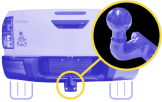
Related Careers
- Tool Maker/Diemaker
- Millwright
- Production Manager
- Quality Viewer
- Machine Operator
- Assembly Line Worker

A hybrid vehicle uses both an electric motor and an internal combustion engine to power the car. The system recaptures energy for the electric motor using regenerative braking. Sometimes, the electric motor does all the work, sometimes it’s the engine, and sometimes they work together.
Car companies use different hybrid designs depending on their priorities i.e. maximising fuel savings or minimising the purchase price of the vehicle.
Did you know?
Power for the electric motor comes from a high-voltage battery pack, separate to the car’s normal 12-volt battery. This battery pack needs to be charged, which can happen in three ways. One: by capturing energy from deceleration which would normally be lost as heat coming off the brakes. Two: by charging off the internal combustion engine. Three: by plugging into a charging station.

Fun Fact!
Hybrid vehicles produce 90% fewer pollutants than comparable internal combustion engines and can save drivers between 15% and 20% on fuel costs!
Related Careers
- Tool Maker/Diemaker
- Millwright
- Production Manager
- Quality Viewer
- Machine Operator
- Assembly Line Worker


